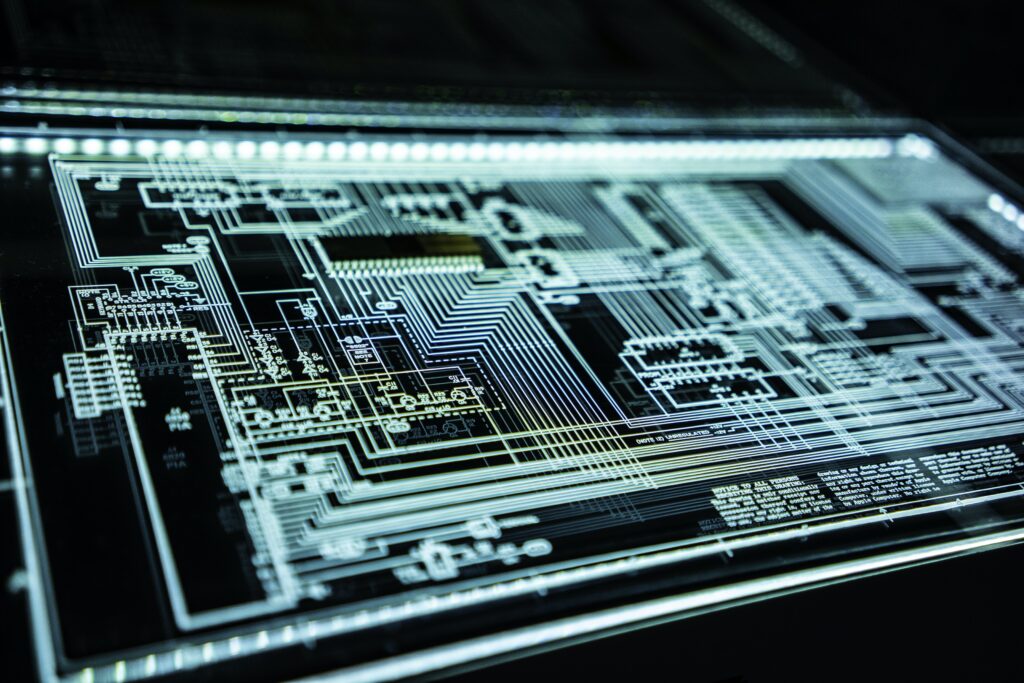In today’s rapidly evolving digital landscape, ensuring comprehensive cyber security is becoming increasingly crucial. The ever-present threats of hacking and cyber exploits demand proactive measures to safeguard valuable data and information. That’s where Security Information and Event Management (SIEM) comes in. By integrating various cyber security software and leveraging advanced technologies, SIEM enables organizations to detect, analyze, and respond to potential security incidents in real-time. In this article, we will explore the significance of SIEM in combating cyber threats and the role it plays in frameworks like RMF and CMMC. Join us as we delve into the world of SIEM and its impact on achieving robust cyber security. Today, we turn to ThreatPost, a reputable source for the latest cyber security news and vulnerabilities, to gain more insights on this critical subject.

Understanding Cyber Security
Cybersecurity is a critical aspect of protecting organizations from the numerous threats lurking in the digital landscape. As technology continues to advance, so do the tactics employed by cybercriminals. Therefore, it is of utmost importance for individuals and businesses to have a solid understanding of cyber security to safeguard their sensitive data and digital assets.
Importance of Cyber Security
In today’s interconnected world, where virtually every aspect of our lives is driven by technology, the importance of cyber security cannot be overstated. A single security breach can have severe consequences, ranging from financial losses to damage to reputation and customer trust. By implementing robust cyber security measures, organizations can mitigate the risks associated with cyber attacks and ensure the confidentiality, integrity, and availability of their valuable information.
Types of Cyber Attacks
Cyber attacks come in various forms, each targeting different vulnerabilities within an organization’s digital infrastructure. Some common types of cyber attacks include:
-
Phishing Attacks: These attacks involve tricking individuals into revealing sensitive information, such as passwords or credit card details, by impersonating a trustworthy entity.
-
Malware: Malicious software, such as viruses, worms, and ransomware, is one of the most common tools used by cybercriminals. Malware can infiltrate a network or device and cause significant harm, ranging from data theft to system disruption.
-
Denial of Service (DoS) Attacks: In a DoS attack, the attacker overwhelms a target system or network with a flood of traffic, rendering it inaccessible to legitimate users.
-
Advanced Persistent Threats (APTs): APTs are complex and targeted cyber attacks that involve prolonged and stealthy infiltration into an organization’s network. These attacks are typically carried out by well-funded and highly skilled adversaries.
Introduction to SIEM
Security Information and Event Management (SIEM) is a comprehensive approach to managing and detecting security events in real-time. It combines the power of security information management (SIM) and security event management (SEM) to provide organizations with a centralized platform for threat detection, incident response, and compliance management.
Components of SIEM
SIEM comprises several key components that work together to provide organizations with a holistic security management solution.
Log Management
Log management is a critical component of SIEM, as it involves collecting, indexing, and storing log data from various sources within an organization’s IT infrastructure. Logs contain valuable information about system activities, user behavior, and network traffic, allowing security teams to identify potential security incidents and analyze historical data for threat intelligence.
Event Correlation
Event correlation involves the analysis and correlation of log data to identify patterns and relationships between security events. By correlating events, SIEM solutions can detect complex threats and generate actionable insights. This component enables security teams to distinguish true security incidents from noise and false positives.
Real-Time Monitoring
Real-time monitoring is a crucial aspect of SIEM, as it allows security teams to continuously monitor their IT infrastructure for potential security threats. SIEM solutions provide real-time alerts and notifications for suspicious activities, enabling organizations to take immediate action and prevent further damage.
Threat Intelligence
Threat intelligence plays a vital role in SIEM implementation. By leveraging threat intelligence feeds and integrating them into the SIEM solution, organizations can enhance their ability to detect and respond to emerging and known threats. Threat intelligence provides valuable context and information about threat actors, attack techniques, and indicators of compromise.
Incident Response
The incident response component of SIEM focuses on coordinating and executing an organized response to security incidents. SIEM solutions facilitate incident response by providing automated workflows, playbooks, and documentation, enabling security teams to quickly and efficiently respond to and remediate security events.

Implementing SIEM for Cyber Security
Implementing SIEM requires careful planning and execution to ensure its effectiveness in safeguarding an organization’s digital assets. The following steps are essential for a successful SIEM implementation:
Identifying Security Requirements
In the initial phase, organizations need to assess their security requirements and understand the specific risks they face. This involves conducting a comprehensive risk assessment, identifying critical assets, and defining the security policies and controls to be enforced.
Choosing the Right SIEM Solution
Selecting the right SIEM solution is crucial for the success of the implementation. Organizations should consider factors such as scalability, integration capabilities, real-time monitoring features, and compliance reporting capabilities when evaluating SIEM vendors. Additionally, organizations should align the chosen solution with their unique security requirements and budget constraints.
Deployment and Configuration
Once a SIEM solution is chosen, it needs to be deployed and configured according to the organization’s infrastructure and security policies. This involves setting up data collection agents, configuring log sources, creating correlation rules, and customizing dashboards and reports.
Data Collection and Integration
To leverage the full capabilities of SIEM, organizations need to collect and integrate data from various sources, such as servers, endpoints, firewalls, and intrusion detection systems. This ensures complete visibility into the organization’s IT environment and enables effective threat detection and incident response.
Advantages of SIEM for Cyber Security
SIEM offers several advantages that significantly enhance an organization’s cyber security posture. Some key advantages include:
Improved Threat Detection
SIEM solutions enable organizations to detect and respond to potential security threats in real-time. By correlating data from multiple sources and leveraging threat intelligence feeds, SIEM solutions can identify advanced and complex attacks that traditional security measures may miss.
Reduced Response Time
With real-time monitoring and automated incident response capabilities, SIEM solutions help reduce the response time to security incidents. This allows organizations to swiftly take action, mitigate the impact of the incident, and prevent further damage.
Compliance with Regulations
SIEM solutions provide robust reporting and compliance capabilities, allowing organizations to meet regulatory requirements. By collecting and analyzing log data, SIEM solutions help organizations demonstrate adherence to industry standards and regulations such as GDPR, HIPAA, and PCI-DSS.
Enhanced Incident Response
SIEM solutions streamline the incident response process, providing security teams with the tools and workflows necessary to effectively respond to security incidents. By automating repetitive tasks, organizations can respond to threats efficiently and minimize the impact of security breaches.

Challenges in Achieving Comprehensive Cyber Security
While SIEM offers numerous benefits, organizations often face challenges in implementing and maintaining a comprehensive cyber security strategy. Some of the common challenges include:
Complexity of IT Infrastructure
Modern IT environments are complex and diverse, consisting of numerous devices, applications, and networks. Managing and monitoring such complex infrastructures can be challenging, requiring organizations to ensure proper data collection, integration, and correlation across all components.
Lack of Skilled Personnel
Cyber security expertise is in high demand, and organizations often struggle to find and retain skilled personnel. Without a knowledgeable and experienced team, organizations may struggle with effectively configuring, operating, and maintaining their SIEM solution, limiting its effectiveness.
Identifying False Positives
SIEM solutions generate a vast amount of alerts and notifications, many of which may turn out to be false positives. Distinguishing between legitimate security incidents and noise can be a time-consuming process. Organizations need to implement effective strategies and fine-tune their SIEM solution to minimize false positives and focus on real threats.
Managing High Volume of Logs
As organizations grow, the volume of log data generated increases exponentially. Effectively managing and analyzing such a high volume of logs can be a daunting task. Organizations need to invest in scalable infrastructure and implement log management best practices to ensure efficient log collection, storage, and analysis.
Best Practices for Effective SIEM Implementation
To maximize the benefits of a SIEM solution, organizations should follow these best practices:
Defining Use Cases
Before implementing SIEM, organizations should define their specific use cases and security objectives. This involves identifying key assets, relevant compliance requirements, and potential threats. Defining use cases helps organizations tailor the SIEM solution to their unique needs and focus on the most critical risks.
Continuous System Monitoring
Cyber threats are constantly evolving, requiring organizations to implement continuous system monitoring. Real-time monitoring ensures that security incidents are detected and responded to swiftly, minimizing the potential impact on the organization.
Regular System Updates and Patching
Keeping the SIEM solution and supporting infrastructure up to date with the latest patches and updates is crucial for maintaining a secure environment. Regular updates help address vulnerabilities and ensure that the solution’s capabilities align with evolving threat landscape.
Training and Education for Staff
Investing in comprehensive training and education for staff is essential, especially considering the shortage of skilled cyber security professionals. Providing regular cybersecurity awareness training helps employees understand their roles and responsibilities in maintaining a secure environment and enables them to recognize and respond to potential threats.
Integrating SIEM with Other Cyber Security Solutions
While SIEM provides a robust foundation for cyber security, it is often more effective when integrated with other security solutions. Some key areas where SIEM can be integrated include:
Endpoint Protection
Integrating SIEM with endpoint protection solutions enables organizations to correlate events from endpoints with network and user behavior. This integration provides an additional layer of defense against advanced threats and enhances the overall visibility into potential security incidents.
Network Security
By integrating with network security appliances, SIEM solutions can analyze network traffic and detect anomalies or malicious activities that may be indicative of a breach. This integration allows security teams to identify potential threats at the network level and respond promptly.
Data Loss Prevention
SIEM solutions integrated with data loss prevention (DLP) systems can help organizations monitor and protect sensitive data, both at rest and in motion. This integration ensures that security incidents involving data leakage or exfiltration are detected and responded to in a timely manner.
Identity and Access Management
Integrating SIEM with identity and access management (IAM) systems helps organizations monitor user activities, detect unauthorized access attempts, and enforce security policies across the entire IT environment. This integration enhances visibility into potential insider threats and ensures that access privileges are appropriate and enforceable.
Future of SIEM in Cyber Security
As cyber threats continue to evolve, so does the role of SIEM in protecting organizations. Several emerging trends are shaping the future of SIEM:
Artificial Intelligence and Machine Learning
The integration of artificial intelligence (AI) and machine learning (ML) technologies into SIEM solutions is revolutionizing the way threats are detected and responded to. AI and ML enable SIEM solutions to learn from historical data and identify patterns and anomalies that may indicate an attack, allowing security teams to respond swiftly and proactively.
Cloud-based SIEM Solutions
With the increasing adoption of cloud technologies, organizations are shifting towards cloud-based SIEM solutions. Cloud-based SIEM offers advantages such as scalability, flexibility, and reduced maintenance overhead. It allows organizations to leverage the power of SIEM without the need for extensive on-premises infrastructure.
Automated Incident Response
Automation is becoming a key feature in SIEM solutions, enabling organizations to automate routine security tasks and incident response workflows. Automated incident response helps organizations respond quickly and efficiently, reducing the manual effort required and freeing up security teams to focus on more critical tasks.
Integration with Security Orchestration
The integration of SIEM with security orchestration, automation, and response (SOAR) platforms is gaining momentum. This integration enables organizations to streamline and orchestrate their security operations, automating the detection, analysis, and response to security incidents.
Cyber Security Regulations and Frameworks
Compliance with cyber security regulations and frameworks is critical for organizations across various industries. Two prominent frameworks that provide guidelines for managing cyber security risks are:
NIST Risk Management Framework (RMF)
The NIST RMF is a widely adopted framework that provides a structured and systematic approach to managing cyber security risks. It helps organizations identify and assess risks, select and implement appropriate controls, and continuously monitor and improve their overall security posture.
Cybersecurity Maturity Model Certification (CMMC)
The CMMC is a certification framework introduced by the United States Department of Defense (DoD) to ensure that defense contractors have robust cyber security practices in place. It encompasses five maturity levels, ranging from “Basic Cybersecurity Hygiene” to “Advanced/Progressive,” and requires organizations to demonstrate compliance with specific security controls.
Conclusion
Comprehensive cyber security is a crucial aspect of safeguarding organizations from the ever-evolving threat landscape. SIEM plays a critical role in this endeavor, providing organizations with the tools and capabilities needed to detect, respond to, and mitigate potential security incidents. By understanding the importance of cyber security, leveraging the components of SIEM effectively, and implementing best practices, organizations can fortify their defenses and ensure the protection of their valuable digital assets. With the future trends and integration possibilities, SIEM continues to play a pivotal role in the ongoing battle against cyber threats.

